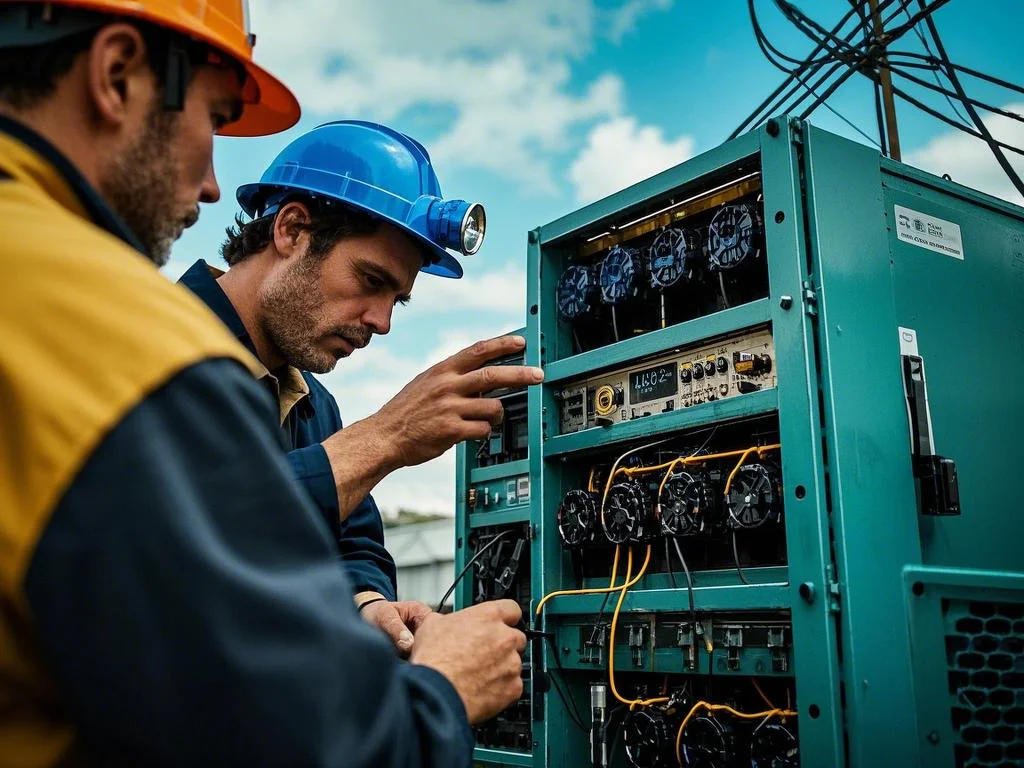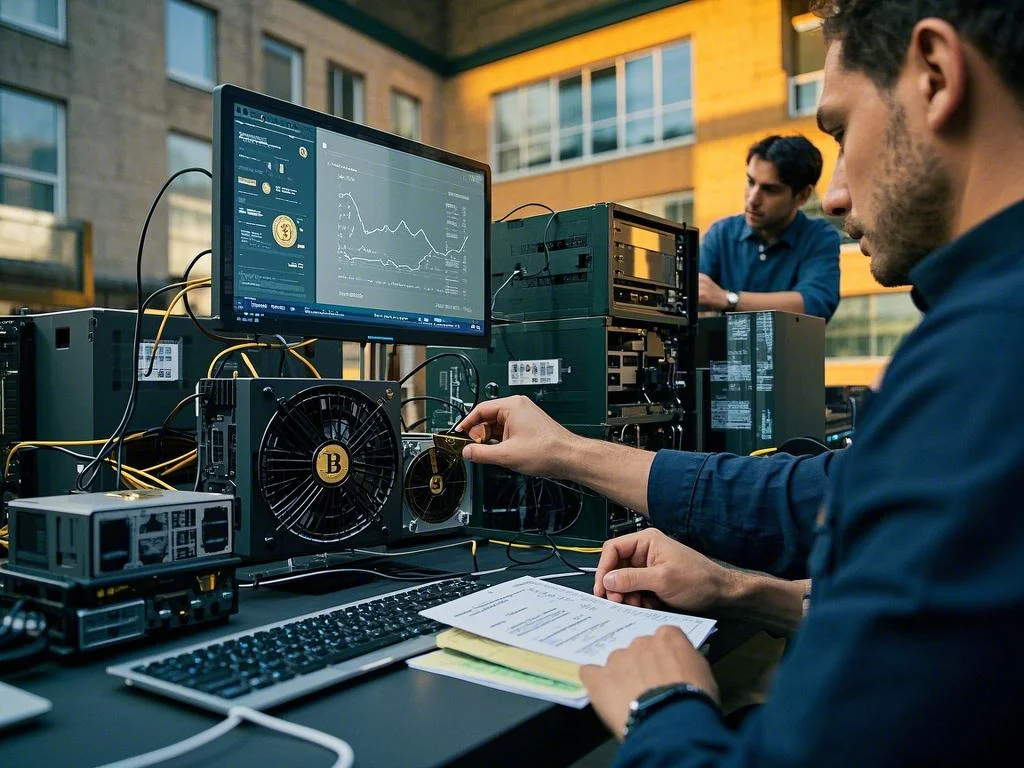Cryptocurrency mining is the process of validating transactions and adding them to a blockchain, the decentralized ledger that underpins digital currencies like Bitcoin and Ethereum. Miners use powerful computers to solve complex mathematical problems, and in return, they are rewarded with newly minted cryptocurrency. While mining can be a profitable venture, it requires significant investment in hardware, electricity, and technical knowledge. In this guide, we’ll walk you through the basics of cryptocurrency mining, the equipment you’ll need, and how to get started in this exciting but challenging field.
What is Cryptocurrency Mining?
Cryptocurrency mining is a critical component of blockchain networks that use proof-of-work (PoW) consensus mechanisms, such as Bitcoin and Ethereum (before its transition to proof-of-stake). Miners compete to solve complex cryptographic puzzles, and the first one to find the solution gets to add a new block of transactions to the blockchain. This process not only secures the network but also ensures that transactions are verified and recorded accurately.
In return for their efforts, miners are rewarded with newly created cryptocurrency and transaction fees. For example, Bitcoin miners currently receive 6.25 BTC (approximately $250,000 as of 2023) for each block they mine, along with any fees associated with the transactions in that block. However, mining is not without its challenges. It requires specialized hardware, consumes a significant amount of electricity, and faces increasing competition as more miners join the network. Despite these hurdles, mining remains an attractive option for those looking to earn cryptocurrency and support the blockchain ecosystem.
Essential Equipment for Cryptocurrency Mining
To get started with cryptocurrency mining, you’ll need the right equipment. Here’s a breakdown of the essential components:
Mining Hardware
The most important piece of equipment for mining is the hardware, which performs the complex calculations required to solve cryptographic puzzles. In the early days of Bitcoin, miners could use standard CPUs (central processing units) or GPUs (graphics processing units) to mine cryptocurrency. However, as the difficulty of mining increased, specialized hardware known as ASICs (application-specific integrated circuits) became the standard for Bitcoin mining. ASICs are designed specifically for mining and offer significantly higher performance than CPUs or GPUs.
For Ethereum and other cryptocurrencies that are still GPU-minable, high-performance graphics cards are the preferred choice. Popular options include NVIDIA’s RTX 30-series and AMD’s RX 6000-series. When choosing mining hardware, consider factors like hash rate (the speed at which the hardware can solve puzzles), energy efficiency, and upfront cost. Keep in mind that mining hardware can be expensive, and the profitability of mining depends on the price of the cryptocurrency and the cost of electricity in your area.
Mining Software
Once you have the hardware, you’ll need mining software to connect your equipment to the blockchain network and manage the mining process. There are several mining software options available, depending on the cryptocurrency you’re mining and the type of hardware you’re using. For example, CGMiner and BFGMiner are popular choices for ASIC mining, while Claymore and PhoenixMiner are commonly used for GPU mining.
Mining software typically allows you to configure settings like mining pools (groups of miners who combine their computational power to increase their chances of earning rewards) and monitor your hardware’s performance. Some software also includes features like overclocking, which can increase your hardware’s hash rate but may also increase power consumption and heat output. It’s important to choose software that is compatible with your hardware and offers the features you need to optimize your mining operation.

Power Supply and Cooling
Cryptocurrency mining is an energy-intensive process, so you’ll need a reliable power supply to keep your hardware running 24/7. High-performance mining rigs can consume a significant amount of electricity, so it’s important to calculate your energy costs and ensure that your power supply can handle the load. Additionally, mining generates a lot of heat, so proper cooling is essential to prevent your hardware from overheating and failing.
Investing in high-quality cooling solutions, such as fans or liquid cooling systems, can help maintain optimal temperatures and extend the lifespan of your mining equipment. You may also need to consider the physical setup of your mining rig, ensuring that it has adequate ventilation and is located in a cool environment. Proper power and cooling management are critical to maximizing your mining efficiency and profitability.
Choosing the Right Cryptocurrency to Mine
Not all cryptocurrencies are created equal when it comes to mining. Some, like Bitcoin, are dominated by large-scale mining operations with access to cheap electricity and specialized hardware, making it difficult for individual miners to compete. Others, like Ethereum (before its transition to proof-of-stake) and newer altcoins, may offer more accessible opportunities for small-scale miners.
When choosing a cryptocurrency to mine, consider factors like the mining algorithm (the mathematical problem your hardware needs to solve), the current difficulty level, and the potential profitability. You can use online mining calculators to estimate your potential earnings based on your hardware’s hash rate, electricity costs, and the current price of the cryptocurrency. Additionally, research the cryptocurrency’s market potential and long-term viability to ensure that your mining efforts are worthwhile.
Setting Up a Crypto Wallet
Once you start mining, you’ll need a secure place to store your earnings. A crypto wallet is a digital tool that allows you to store, send, and receive cryptocurrency. There are several types of wallets to choose from, including hardware wallets (physical devices that store your private keys offline), software wallets (applications that run on your computer or smartphone), and web wallets (online platforms provided by exchanges).
For miners, hardware wallets are often the best choice because they offer the highest level of security. Popular options include Ledger and Trezor. Once you’ve set up your wallet, you’ll receive a public address, which you can use to receive mining rewards. It’s important to keep your private keys secure, as they provide access to your funds. Losing your private keys means losing access to your cryptocurrency, so consider backing them up in a safe location.
Joining a Mining Pool
Mining pools are groups of miners who combine their computational power to increase their chances of solving cryptographic puzzles and earning rewards. When a pool successfully mines a block, the rewards are distributed among its members based on their contribution to the pool’s total hash rate. Joining a mining pool can be a good option for individual miners, as it provides a more consistent income stream compared to solo mining.
There are many mining pools to choose from, each with its own fee structure and payout methods. Some popular pools include Slush Pool for Bitcoin and Ethermine for Ethereum. When selecting a pool, consider factors like the pool’s size, fees, and reputation. Larger pools may offer more frequent payouts, but smaller pools can provide a more decentralized mining experience. It’s also important to read reviews and ensure that the pool has a reliable track record.
Final Thoughts
Cryptocurrency mining can be a rewarding endeavor, but it requires careful planning, investment, and ongoing maintenance. By understanding the basics of cryptocurrency mining, choosing the right equipment, and optimizing your setup, you can increase your chances of success in this competitive field. Whether you’re mining Bitcoin, Ethereum, or another cryptocurrency, staying informed about market trends and technological advancements is key to maximizing your profitability.
Remember, mining is not a guaranteed way to earn money, and it comes with risks such as hardware failure, fluctuating cryptocurrency prices, and rising energy costs. However, with the right approach and a commitment to learning, you can turn cryptocurrency mining into a profitable and fulfilling venture. As the world of blockchain technology continues to evolve, mining will remain an essential part of the ecosystem, providing opportunities for individuals and businesses alike to participate in the future of digital assets.
